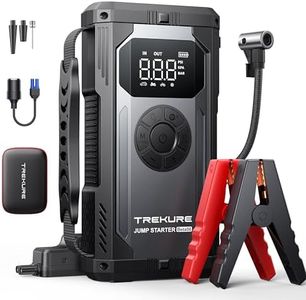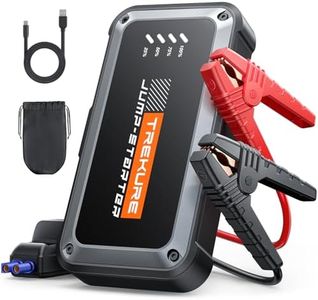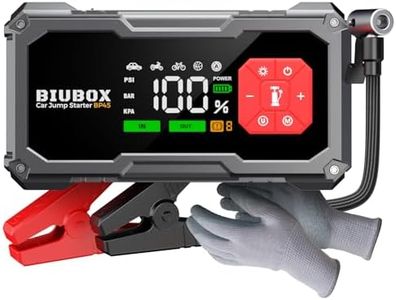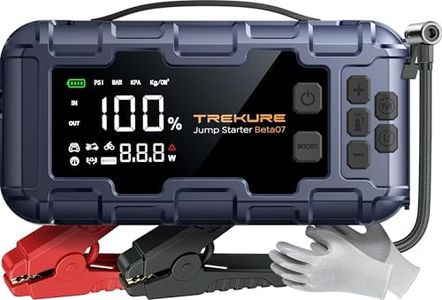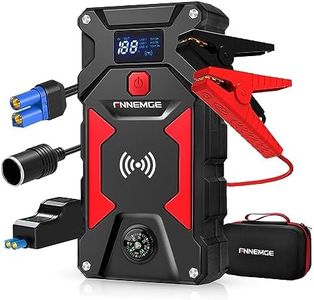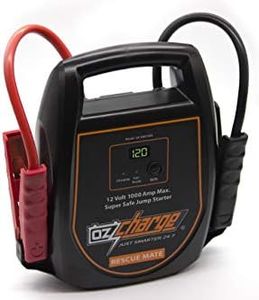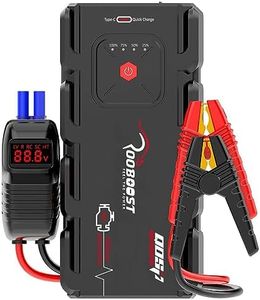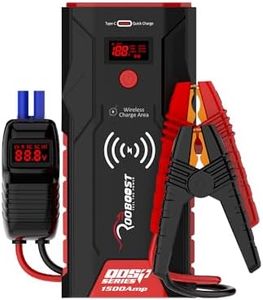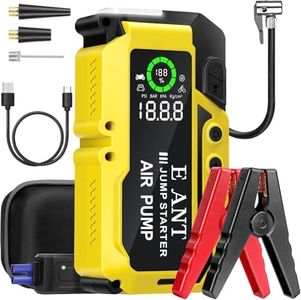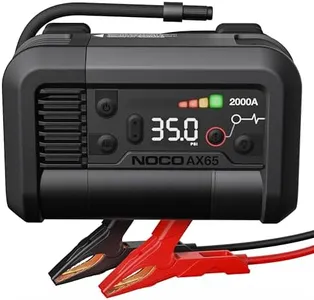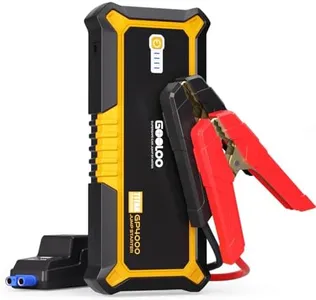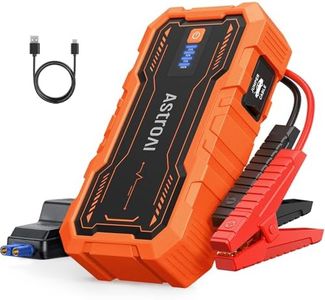We Use CookiesWe use cookies to enhance the security, performance,
functionality and for analytical and promotional activities. By continuing to browse this site you
are agreeing to our privacy policy
10 Best Boat Jump Starter
From leading brands and best sellers available on the web.Buying Guide for the Best Boat Jump Starter
When looking for a boat jump starter, it's essential to understand that you need a reliable tool to start your boat's engine when the battery is dead. Instead of relying on other boats or waiting for help, a jump starter can give you independence and peace of mind on the water. The right jump starter should fit your boat’s engine size, be safe to use in the marine environment, and be convenient to store and carry. Always focus on matching the jump starter’s capabilities to your specific boat needs and remember that bigger is not always better—a proper fit matters most for safety and effectiveness.Peak AmpsPeak amps represent the maximum current the jump starter can deliver for a short burst to start your boat's engine. This is crucial because boats with larger or more powerful engines, such as those with multiple cylinders or diesel engines, require more power to start. Lighter outboard engines or jet skis need less. Generally, jump starters under 500 amps are suited for small outboard motors or personal watercraft, while 1000 amps or more may be necessary for larger boats or engines. To choose the right peak amps, check your engine size and type, and refer to the boat or engine manual for recommended jump start requirements.
Battery Capacity (mAh or Ah)Battery capacity, measured in milliamp-hours (mAh) or amp-hours (Ah), tells you how much energy the starter can store and how many times it can be used before recharging. Higher capacity means more starts or the ability to power devices longer. For emergency-only situations, lower capacity may be fine, but if you want to charge phones or other equipment too, or plan several starts without recharging, pick a higher capacity. Think about how often you’ll use it and if you prefer a compact or more robust jump starter.
Safety FeaturesSafety features in a boat jump starter prevent damage to your boat’s electrical system and protect you from accidents. These may include reverse polarity protection (to prevent operation if clamps are connected wrong), spark-proof technology, short circuit protection, and overcharge protection. Basic units may have fewer features, while advanced units offer comprehensive protections. If you’re less experienced or don’t regularly work with batteries, prioritize units with clear safety features to minimize risk.
Water ResistanceBecause the marine environment is wet and unpredictable, water resistance is key for a boat jump starter. This is often measured through IP ratings (like IP65 or IP67), with higher numbers meaning better protection against water and dust. Light rain or splashes require minimal resistance, but for heavy exposure, like rough seas or open boats, opt for higher-rated water resistance. Select the rating based on your typical boating conditions and storage location.
Portability and SizePortability refers to how easy it is to carry and store the jump starter on your boat. Some are small and lightweight, easy to stow in a glove box or hatch, while others are bulkier but offer more power or capacity. If your boat is small with limited storage, prioritize size and weight. For larger boats, or multi-day excursions, you might prefer a bigger model with more features.
Additional FeaturesSome boat jump starters come with extra features like USB ports for charging electronics, built-in flashlights, air compressors, or LCD displays. These can add convenience, especially if you need to charge phones or need light for nighttime emergencies. Decide what extras are most useful for your boating style—if you often fish at night, for example, a bright flashlight could be helpful.
